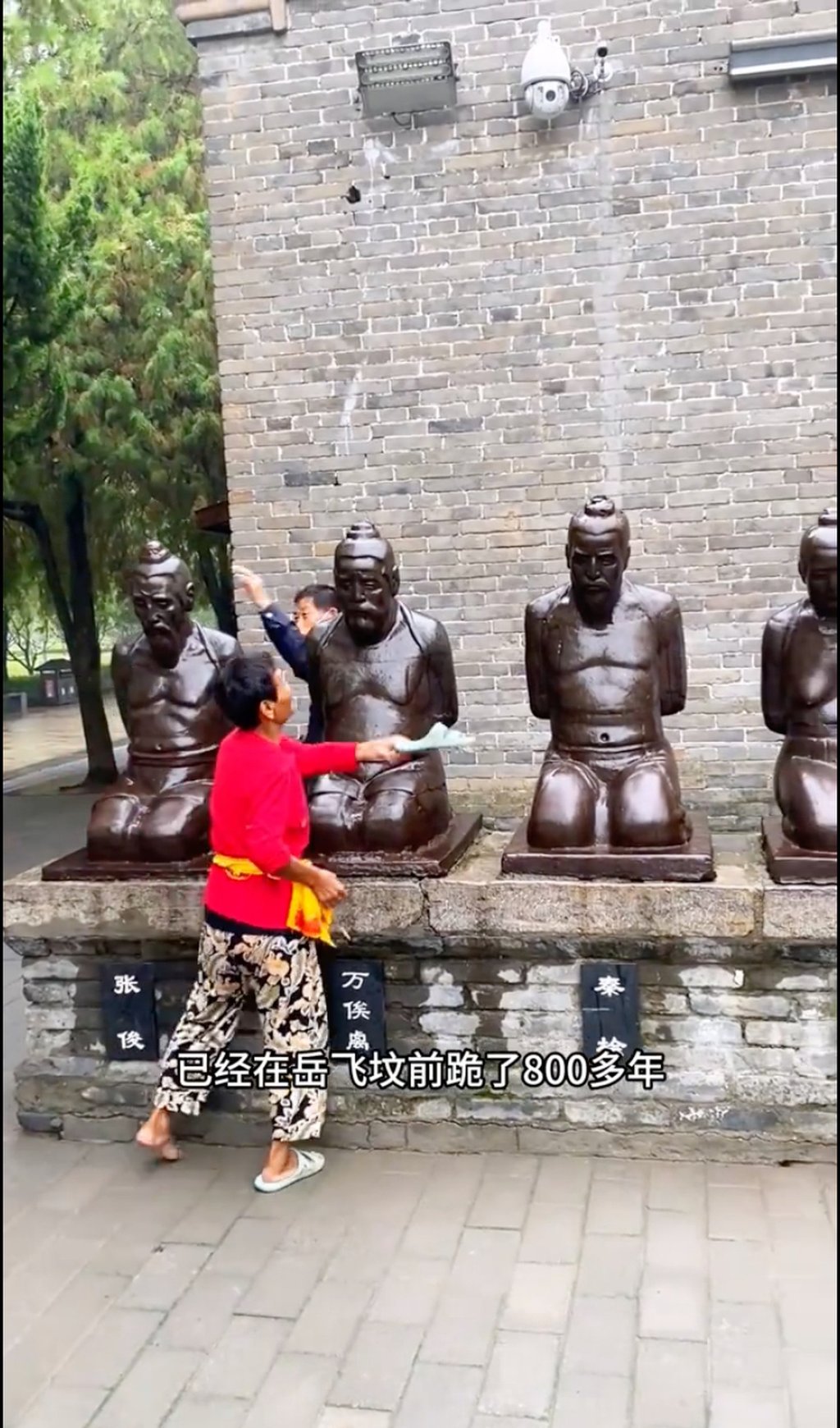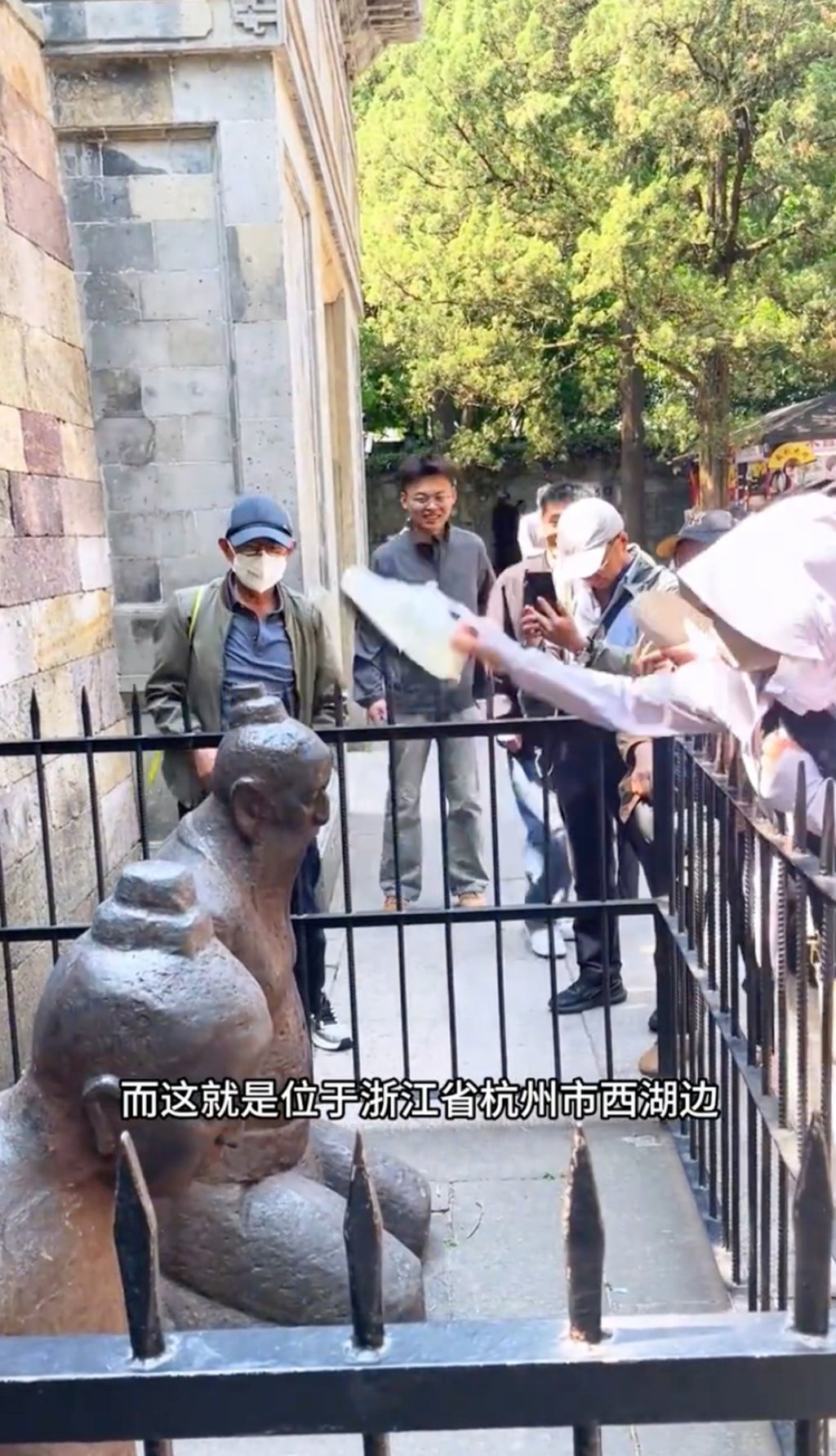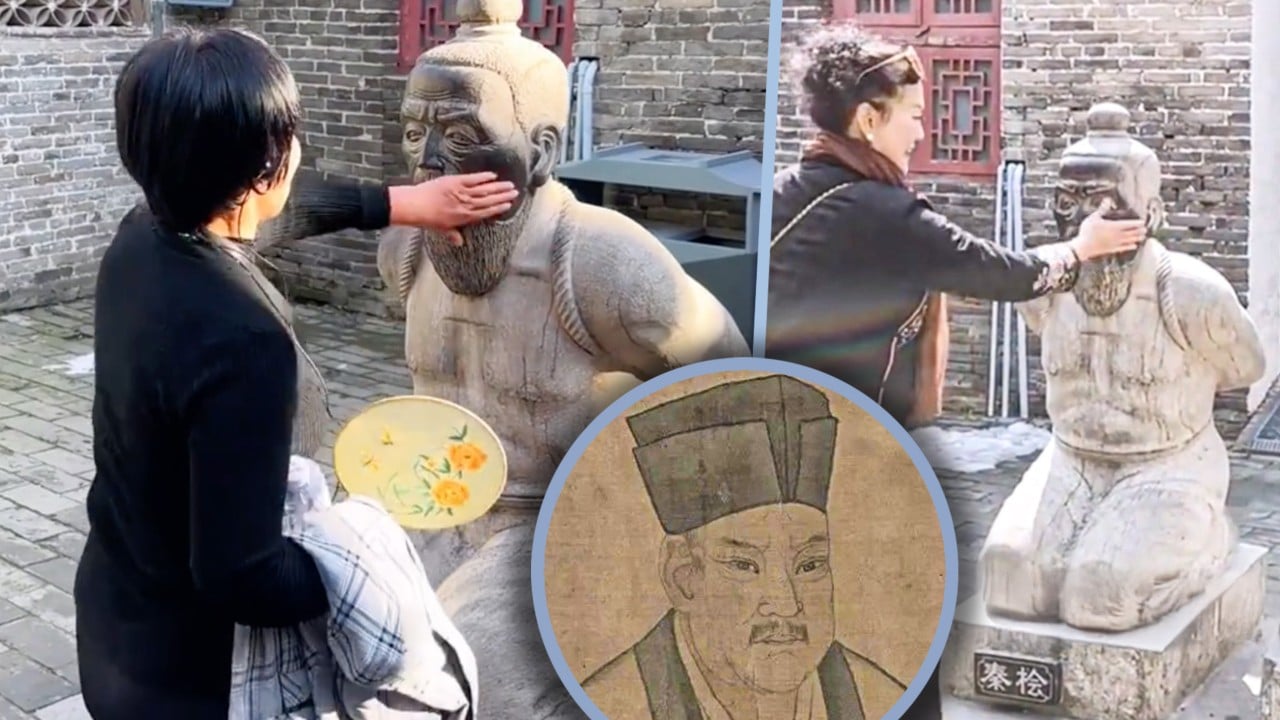While many statues in tourist spots across China receive admiration from visitors, some particular sculptures evoke angry reactions, prompting members of the public to express their disdain in various ways.
Advertisement
A notable example is the statue of Qin Hui and his wife, Wang. Qin was a chancellor during the Southern Song dynasty (960-1279) who persuaded Emperor Gaozong to execute the esteemed general Yue Fei.
Yue, revered for his dedication to fighting against invasions from northern regimes, is considered a national hero in China. He met his untimely death in 1142 at the age of 39 in suburban Hangzhou, eastern Zhejiang province, after the emperor ordered his arrest on unfounded charges of rebellion.

Public discontent towards Qin intensified when a close friend of Yue asked him if he had any evidence to support the claims of Yue’s betrayal. Qin’s dismissive reply was, “He probably committed the crime.”
The first statues of the Qin couple, crafted from iron, were erected in the 15th century by a governor in Zhejiang, placed in front of Yue’s tomb to honour Yue’s legacy while simultaneously expressing public hatred for Qin.
The statues depict both Qin and Wang naked, kneeling on the ground with their arms bound behind their backs and ropes around their necks.

Today, at least seven sets of the couple’s statues can be found across China, including one at Yue’s mother’s tomb in eastern Jiangxi province and another in Yue’s hometown in Henan province, central China.

